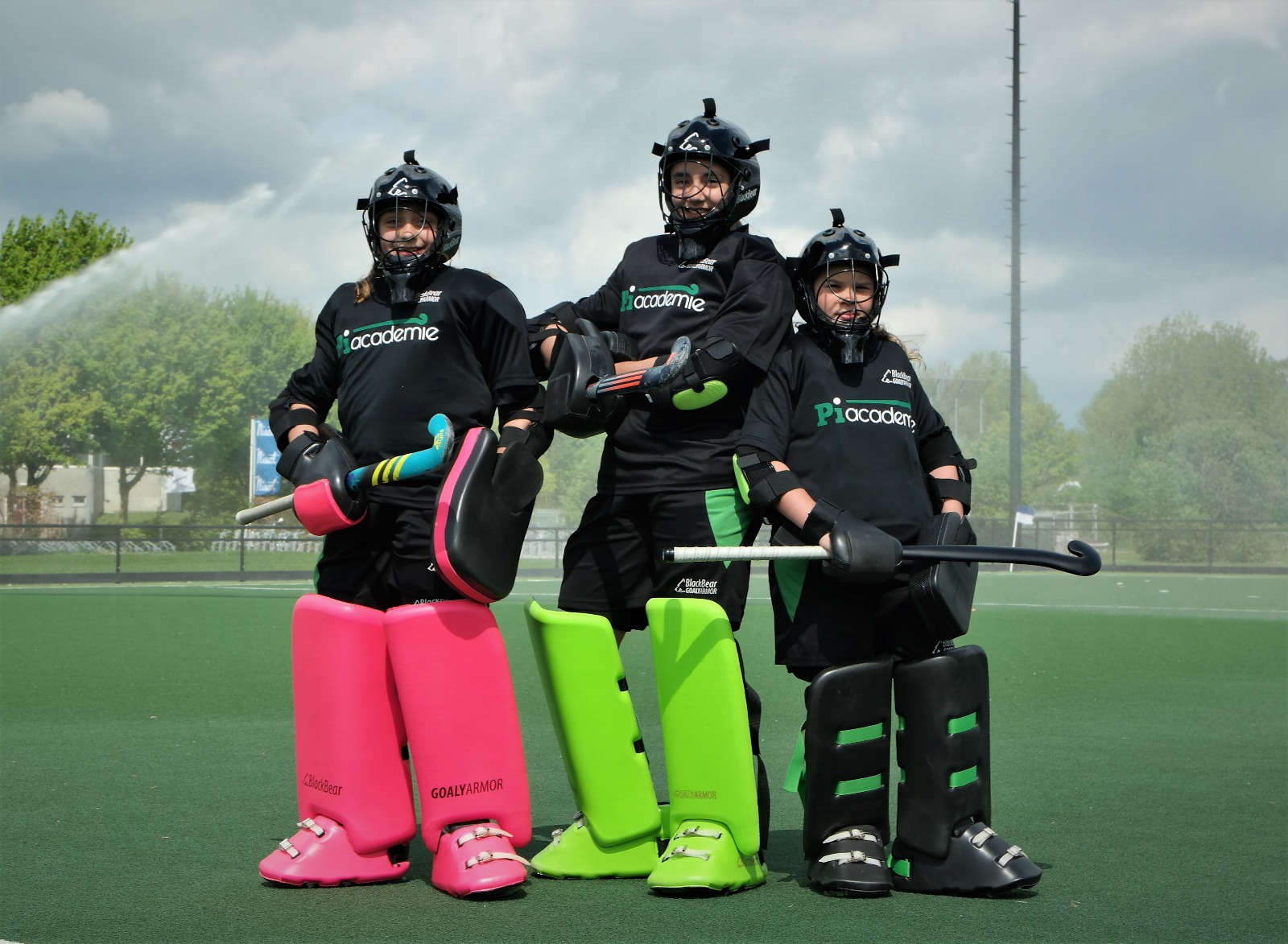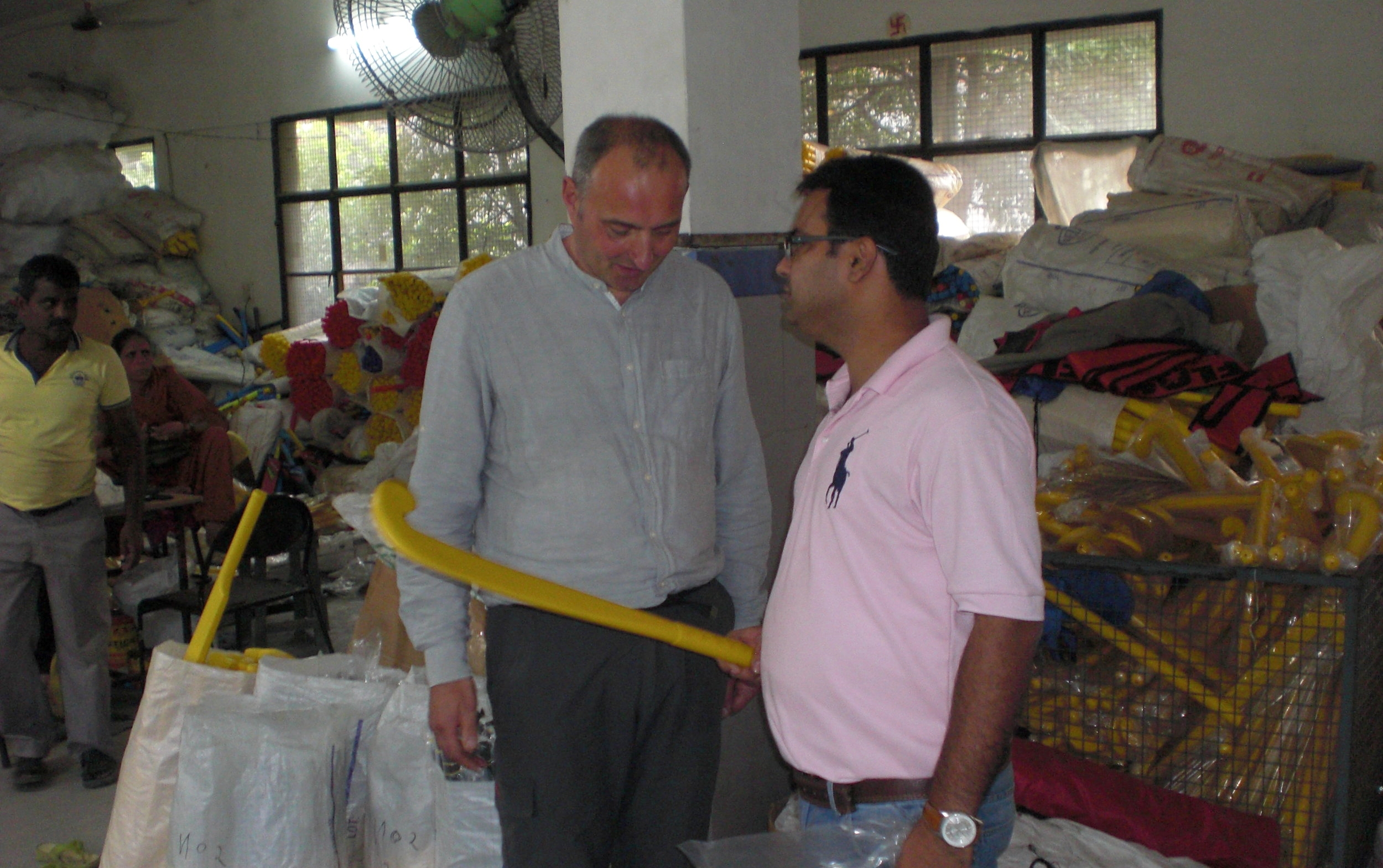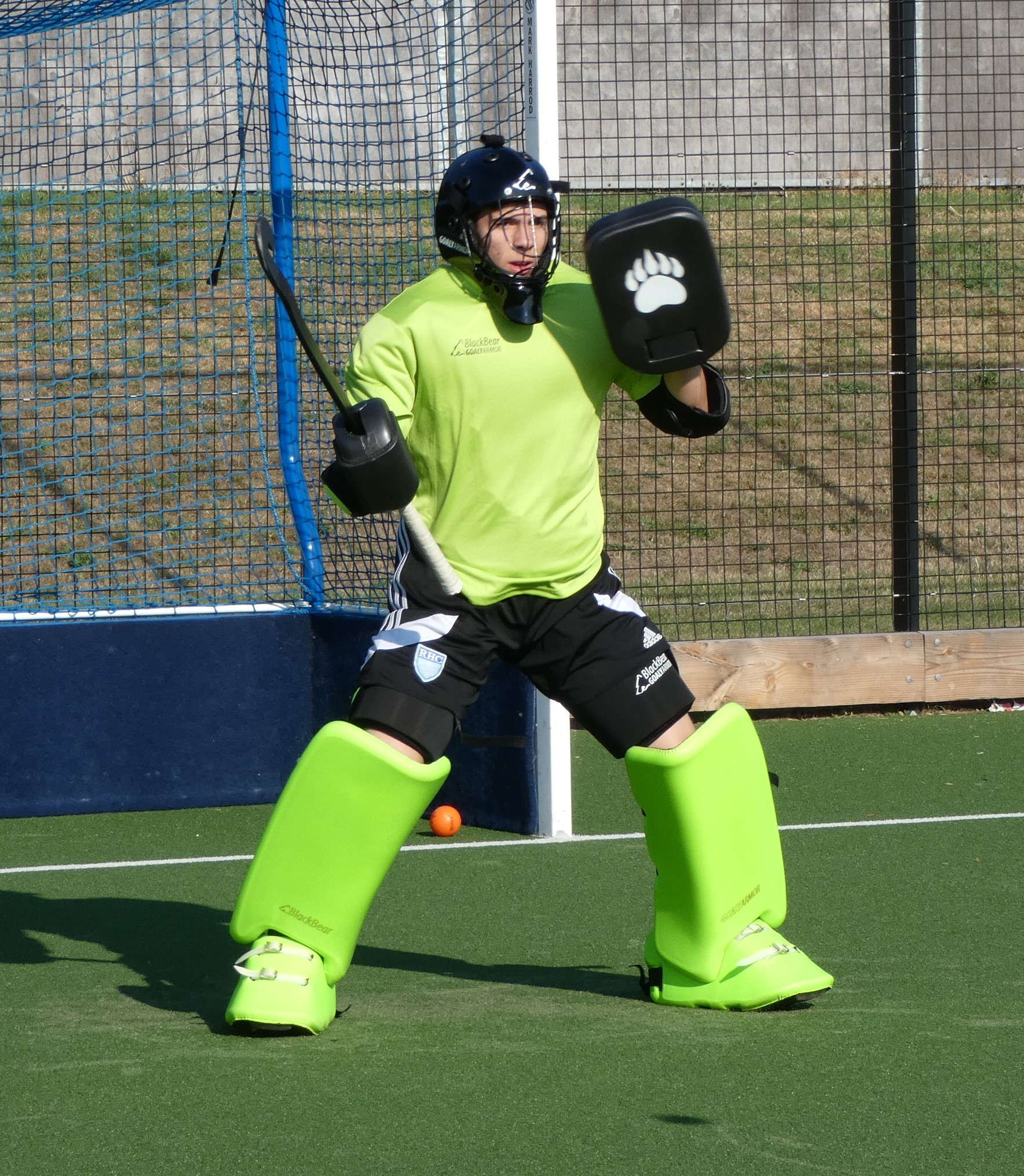'Oh no huh, I shouldn't go to India after all,' thinks Aert van der Goes when he stumbles upon that country in his search for a producer of field hockey goalie protection. Three years later, his opinion has turned 180 degrees. "I asked my Indian partner to become a shareholder," he says.
Finished goalkeeper outfit
When the daughter of Aert van der Goes sees the goalie outfit provided by her Breda field hockey club, she almost loses the desire to play goalie. Tattered, smelly material, and that too in three colors that clash. "That's not the way to make it attractive to play goalkeeper," Van der Goes realizes, but inquiries at the field hockey club reveal that field hockey goalie clothing is expensive: there's no other way. But it can be done differently, thinks Van der Goes, who played goalkeeper himself in his youth. He conducts market research and finds that the niche market for field hockey goalie outfits is dominated by a manufacturer from New Zealand, which makes good but also very expensive material. Van der Goes, an entrepreneur at heart, smells opportunity.
Only place in Asia
In his search for a producer, Van der Goes stumbles upon the town of Jalandhar in the Indian state of Punjab in 2015. "Oh no huh," he thinks, "not India after all." Poverty, chaos, diarrhea, filth: the preconceptions haunt his mind. But there is little else to do. Jalandhar seems to be about the only place in Asia where goalkeeper outfits are made. Through the Internet, he contacts a producer he can meet at Schiphol Airport just a week later. "The guy happened to have to be in Europe on business. He was already active in Europe, supplying simple legguards (large foam leg guards) to an American party under private label."
From the beginning, I resolved not to be too stubborn with this company and to bring in experts in time.
No culture shock
Although things clicked between the two, Van der Goes engaged IndiaConnected in 2015. "From the beginning, I resolved not to be too cocky with this company and to bring in experts in time," he says. In September 2015, he travels to India for the first time. That working visit pleasantly surprised him. "At the airport in Delhi, I was neatly met in the middle of the night by a driver with one of those signs with "Mr. Aert van der Goes" on it. The hotel was beautiful and the people giant friendly. The next day I explored the city and feasted my eyes. Delhi is a busy metropolis, but it wasn't a culture shock for me."
Professional factory
In Amritsar, the nearest airport from Jalandhar, two days later Van der Goes meets IndiaConnected Associate Bhupinder Bansal who has organized a comprehensive program for him. Together they visit potential manufacturers in and around Jalandhar. The factories turn out to be of very varying levels. Van der Goes: "We saw a professional factory where up to four hundred people work, but also small producers where people sit on the floor gluing legguards together. In general, the working conditions in the factories I saw were not as bad as the media usually portray. During that first working visit I got a good idea of the possibilities of manufacturing in India."
During my first working visit, I got a good idea of the possibilities of manufacturing in India."
Long-term working relationship
Six months later, Van der Goes travels to Jalandhar again with Bansal by his side. Bansal, whose command of Punjabi in addition to excellent English, supports him during negotiations with the producer with whom Van der Goes has the best feeling. "The director of the party I have partnered with has the same vision of the market as I do. That is important when you want to establish a long-term working relationship. Especially since we really started developing our product together. The product we have now is 50% from their quiver and 50% from mine."
Ennobled tailors
So what does the factory look like? "It's messier than I would like," Van der Goes acknowledges. "It's manual labor, so the continuity of production requires constant attention. I regularly spend a few days on the shop floor myself to insist on quality. This is going better and better. Although our employees do not speak English, they are not unskilled people. They are a kind of refined tailors who work with foam materials. It is specialized handiwork and there is a shortage of that in India as well. The working conditions are therefore relatively good. The education of the employees' children, for example, is paid for by the company."
Co-shareholder
After three years of development, Van der Goes is ready to scale up. "In 2019 we are going to triple our production capacity. Our producer is investing in this. I have also asked him if he would like to become a co-shareholder of Black Bear Goaly Armor. It's just not there yet, because his father-in-law still has a big finger in the pie. That is a disadvantage of doing business with family businesses. Meanwhile, our mutual trust is fortunately high. This is evident from his willingness to invest to expand production. In the future we will further secure our cooperation, perhaps by making him a co-shareholder in my company."



